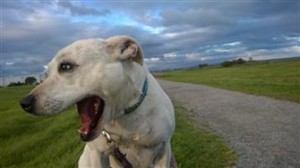Dogs and water, the vital connection
 Dogs and water, the vital connection
Dogs and water, the vital connection
Providing water for your dog when you both go OUT.
Dogs love to drink from puddles or anywhere they can, but this can lead to upset stomachs or disease. You can’t regulate where your dog will drink off lead, but guiding them to a fountain and turning the tap on for them will give them the option of clean water. If you are no where near a fountain, you can always carry a bottle of water around with you, and use a doggy waste bag as the bowl.
The whole turning the tap on may seem extreme, but even dogs that love frolicking and drinking from muddy puddles will often demand fresh running water from a park dog fountain. This is probably because they have had their fill of muddy water, and their body is craving some of the fresh stuff to fulfil the body needs mentioned earlier.
Extreme dog water measures
Some dogs will play with their bowl pushing it around the room until all of the water spills out. To avoid this you can put one large rock in the bowl, or just buy a heavy ceramic water bowl. The large bucket may also make spilling it more of a challenge, but other people go the deluxe path and buy a small purpose built doggy fountain that is power operated and keeps clean water flowing over its surface. This makes the water more attractive to a lot of dogs, and can also cool the water down – great for hot days.
Regulating a dogs body temperature
If you live somewhere hot and cant afford refrigerative air-conditioning, your dog has probably already found the coldest spot in the house. This may be a tiled bathroom or concrete floor. Other options of cooling your dog down include spraying them with water, giving them ice cubes to munch, running a sprinkler for them to play in, or keeping frozen water soda bottles for them to lie next to.
Many dogs are evolved from colder climates, hance the big thick coats. This naturally means that they will feel the heat more than a dog breed for warmer climates. Unless you are showing a dog it is recommend that you shave it down during the hotter months. Some coats don’t grow back well, so you may need to learn grooming techniques such as stripping the hair. As long as shaving doesn’t expose its skin to too much hot sun or prickly weeds, your dog will keep considerably cooler and probably need less water.
Feeding a dog, dog food pellets or dog treats can lead to dehydration
This is an unusual one that I have personally discovered. I only feed my dog on a raw meat diet (including bones) if I can, however when he eats pellets, the large grain load in them seems to take the water right out of his mouth and other systems most likely. While raw meat has 70% water, and is a far more healthy way to go, pellets usually have very little moisture and can make your dog excessively thirsty. Similarly feeding your canine dog treats, even in winter, can substantially dehydrate them. This is not only from all the chewing, but the dried treats rehydrate in the dog’s stomachs, messing with the water balance. So even in winter, it is important that a dog has a fresh water supply near by it.
Checking your dog for adequate hydration
The two main methods are checking that the mouth gums are a healthy pink colour and moist and that the skin on their back or neck snaps quickly back into place when you pull it away from their body and allow it to fall back. If either of these two signs suggests that your dog is dehydrated and it has had all of the water that it wants, you may want to take your dog to the vet.
Drinking excess water can also be a sign of kidney damage and may need to be checked out. Significant increase or decrease in water consumption can signify health problems so be aware of what is normal for your dog.